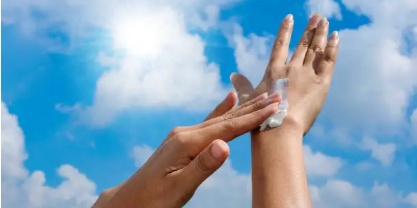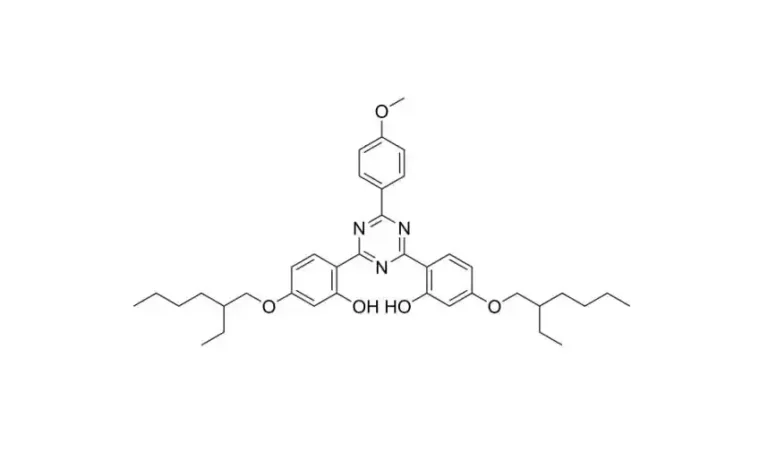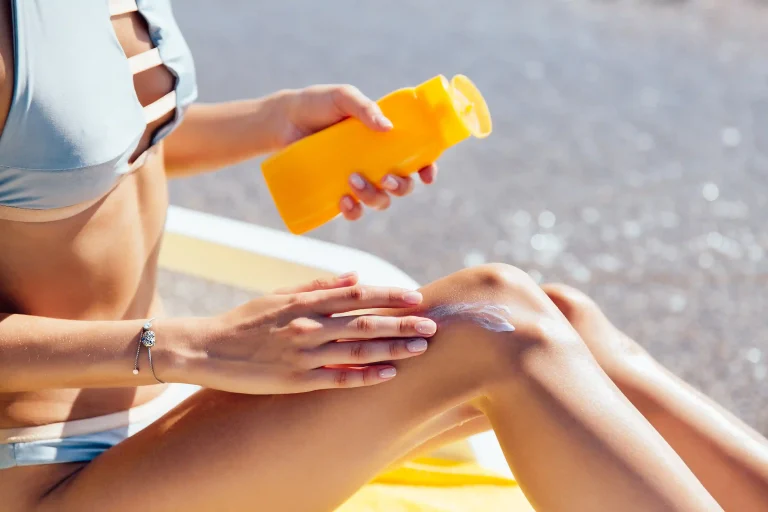La protezione solare protegge la pelle dai raggi nocivi del sole. Ma i miti sui filtri chimici UV confondono le persone. Questo può portare a cattive scelte di cura della pelle. La tua pelle potrebbe essere danneggiata.
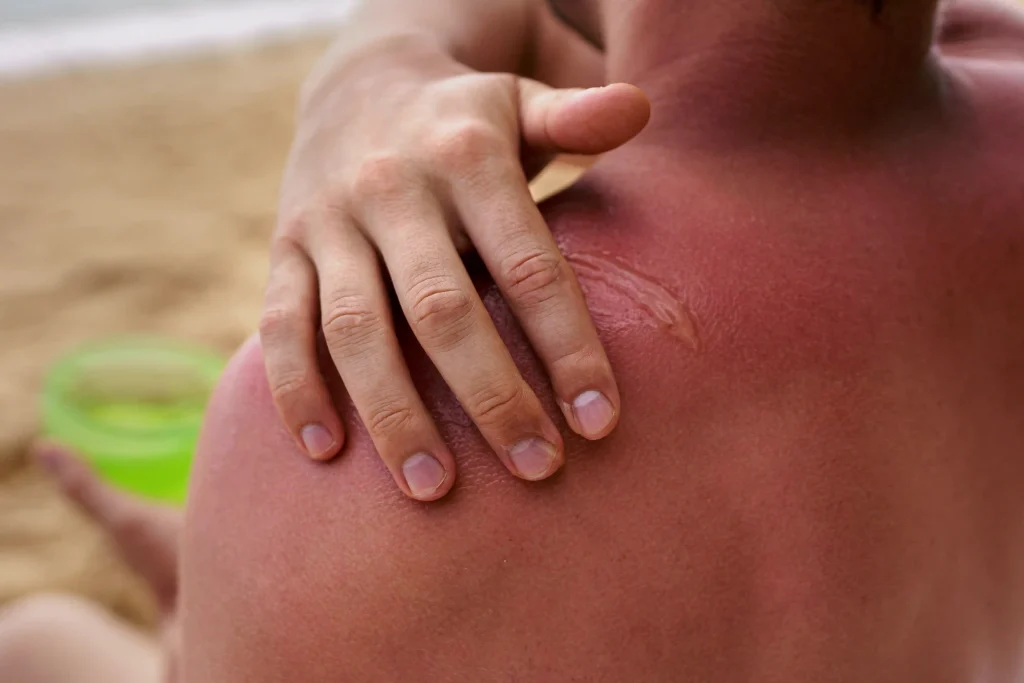
Bisoctrizole è un ingrediente principale nelle moderne protezioni solari. È noto per essere stabile e forte. chiariamo queste Miti sui filtri UVMostreremo perché Bisoctrizole Cambia la protezione solare in meglio.
Che cos'è il bisoctrizolo e perché è speciale?
BisoctrizoleTinosorb M è un filtro UV unico. Miscela le parti migliori di Crema solare chimica vs fisicaSi assorbe, rimbalza e diffonde i raggi UVA e UVB. Questo copre la gamma 280-400 nm, con la migliore protezione a 303 nm e 358 nm. Le sue minuscole particelle (<200 nm) rimangono nella parte acquatica della crema solare. Forniscono una protezione duratura. Non affondano profondamente nella tua pelle. Questo ingrediente costante aiuta anche altri filtri UV a funzionare meglio. È una parte fondamentale dei nuovi prodotti protettivi solari.
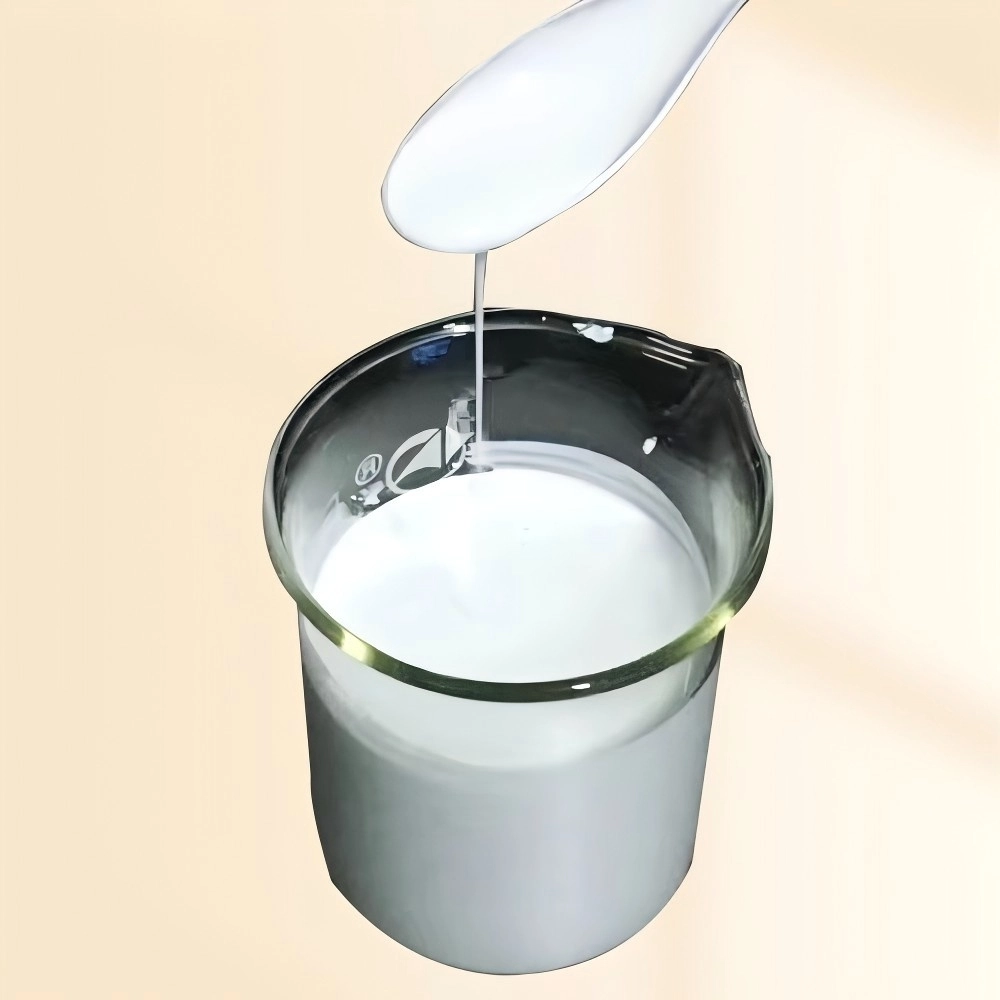
Perché è Bisoctrizole importante? Si incontra la necessità di una protezione solare sicura, forte e ecologica. Molti Miti sui filtri UV esistere. Imparare su Benefici del bisoctrizole aiuta i marchi e le persone a scegliere saggiamente.

5 grandi miti sui filtri UV chimici
Le persone spesso fraintendono Crema solare chimica vs fisicaQuesto può farli evitare buoni prodotti. Di seguito, rompiamo cinque miti comuni. Mostreremo come Bisoctrizole stabilisce un nuovo standard.
Mito 1: Creme solari chimiche feriscono la pelle
Il mitoAlcuni dicono che i filtri chimici UV sono cattivi. Pensano che questi causino eruzioni cutanee o immergersi troppo nel corpo, a differenza delle creme solari minerali.
La veritàNon tutti i filtri chimici sono uguali. Bisoctrizole è molto sicuro. Gli studi dimostrano che entra appena nella pelle (solo lo 0,14%). Non agisce come ormoni, a differenza dei filtri più vecchi come l’ossibenzone. Il suo mix di caratteristiche chimiche e fisiche lo rende delicato. Bene per la pelle sensibile. Uno studio nel Rivista di Dermatologia Clinica ed Estetica dice Bisoctrizole è sicuro e funziona per molti tipi di pelle.
- Benefici del bisoctrizoleDifficilmente entra nella pelle, non irrita e rimane forte alla luce del sole.
- A differenza dell'avobenzone, che si degrada rapidamente al sole, BisoctrizoleContinua a lavorare senza aiuto aggiuntivo.
Mito 2: Creme solari chimiche Salta la protezione UVA
Il mitoMolti pensano che le protezioni solari chimiche blocchino solo i raggi UVB. Crediono che questo lasci la pelle aperta ai danni UVA, che causano l'invecchiamento.
La verità: Bisoctrizole Blocca sia i raggi UVA (320-400 nm) che UVB (290-320 nm). Assorbe, riflette e diffonde la luce UV per una completa protezione. Uno studio nel Rivista internazionale di scienze cosmetiche trovato Bisoctrizole aumenta la protezione UVA quando mescolato con altri filtri. Batte molte protezioni solari chimiche più vecchie.
| Tipo di filtro | Protezione UVA | Protezione UVB | Rimane forte |
| Bisoctrizole | Forte | Forte | Grande |
| Avobenzone | Va bene. | Nessuno | Debole |
| Ossido di zinco (minerale) | Forte | Forte | Grande |
Mito 3: Creme solari chimiche dannano la natura
Il mitoAlcuni dicono che i filtri chimici UV dannano gli oceani, in particolare le barriere coralline.
La veritàAlcuni filtri, come l'ossibenzone, sollevano preoccupazioni. Ma... Bisoctrizole è più gentile con l'ambiente. Non si dissolve facilmente in acqua. Rimane anche sulla pelle meglio. Ciò significa meno lavaggi in mare. In Europa, dove Bisoctrizole è popolare, marchi Focus su prodotti ecologiciLa sua forza significa che hai bisogno di meno protezione solare per una buona protezione. Usando Bisoctrizole supporta scelte di cura della pelle verde.
- Perk ecologico: BisoctrizoleNon ha bisogno di sostanze chimiche extra per rimanere forte. Ciò riduce l’inquinamento oceanico.
- Si adatta ai marchi che si preoccupano del pianeta.
Mito 4: Le protezioni solari chimiche si usurano rapidamente
Il mitoLa gente pensa che le protezioni solari chimiche smettano di funzionare rapidamente. Pensano che dovete riapplicarli spesso.
La verità: Bisoctrizole rimane forte alla luce del sole. A differenza dell'avobenzone o dell'ottinosato, che sbiadiscono rapidamente, Bisoctrizole dura più a lungo. Aiuta anche altri filtri a rimanere efficaci. Ciò significa che non è necessario riapplicare così tanto. È facile per gli utenti e affidabile per i marchi che producono protezioni solari forti.
Mito 5: tutti i filtri UV funzionano allo stesso modo
Il mitoAlcuni pensano che tutti i filtri UV offrano la stessa protezione. Crediamo che l’ingrediente non abbia importanza.
La verità: Bisoctrizole è speciale. Assorbe, riflette e diffonde i raggi UV. Questo lo rende molto efficace. Aiuta anche altri filtri, come l'ottinosato, a funzionare meglio. A differenza delle protezioni solari minerali, che possono lasciare un segno bianco, Bisoctrizole si miscela senza problemi. Si adatta a tutti i colori della pelle. Le marche possono usarlo per creare prodotti leggeri e belli.
Perché il bisoctrizolo cambia i prodotti protettivi solari
Benefici del bisoctrizole andare oltre la distruzione dei miti. La sua azione a tre vie (assorbimento, riflessione, dispersione) fornisce una protezione UV superiore. Per le imprese, Bisoctrizole offerte:
- Facile da usareFunziona con la maggior parte dei filtri UV. Ciò aiuta a creare nuovi prodotti.
- Amore dei clientiNessuna macchia bianca, ideale per tutti i toni della pelle, e dura a lungo.
- Rule-FriendlyApprovato in Europa e in altri luoghi. Si adatta alle tendenze globali per una migliore protezione solare.
Poiché le persone vogliono protezioni solari sicure, forti e verdi, Bisoctrizole aiuta i marchi a soddisfare queste esigenze. Mantiene i prodotti funzionano bene.
Informazioni su Shanghai BFP
Shanghai BFP Nuova Materia rende ingredienti di protezione solare di alta qualità. Si concentrano su filtri UV organici e minerali come biossido di titanio e ossido di zinco.
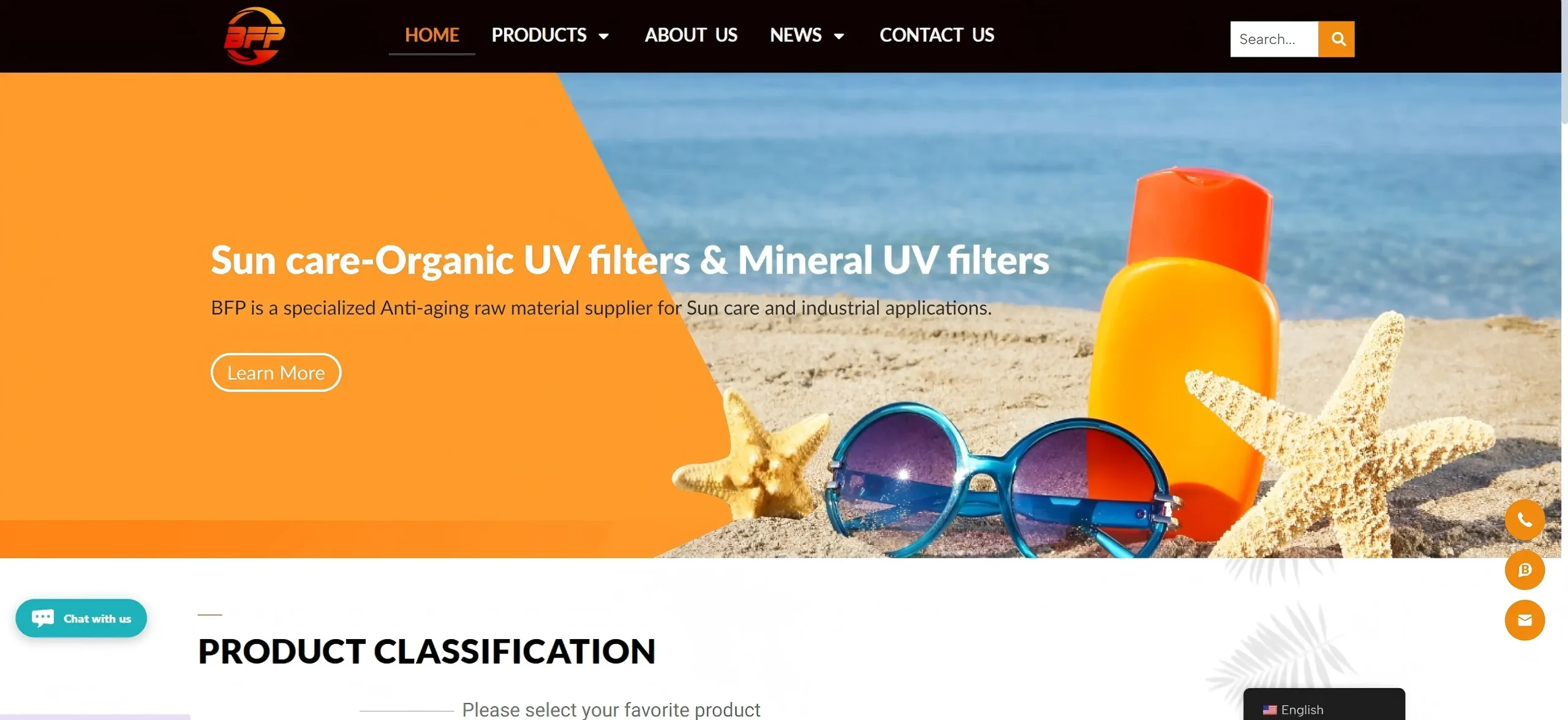
Le loro fabbriche seguono rigorose regole GMP. Ciò garantisce che i prodotti siano sicuri e stabili. BFP aiuta i marchi cosmetici globali con soluzioni nuove ed ecologiche, come Bisoctrizole (BFP-SP M). Scopri di più su Shanghai BFP.
Domande frequenti sui filtri UV chimici e sul bisottorizolo
- Cosa rende il bisoctrizolo diverso da altri filtri chimici UV?
Bisoctrizoleè un mix di protezione solare chimica e fisica. Assorbe, riflette e diffonde i raggi UVA e UVB. Ciò fornisce una protezione completa. Rimane forte alla luce solare, a differenza di filtri come l'avobenzone che sbiadiscono. - Bisoctrizole è buono per la pelle sensibile?
- Sì. - Sì. Bisoctrizoleappena entra nella pelle. Non irrita molto. È sicuro perché non agisce come ormoni. - Come si confronta il bisoctrizolo con le protezioni solari minerali?
Creme solari minerali possono lasciare un segno bianco. Bisoctrizolesi miscela senza problemi. Offre la stessa forte protezione per i raggi UVA e UVB. Il suo mix di caratteristiche chimiche e fisiche lo rende speciale. - Bisoctrizole aiuta con l'invecchiamento?
- Sì. - Sì. Bisoctrizoleblocca i raggi UVA. Questi raggi rompono il collagene e causano rughe. Aiuta a mantenere la pelle giovane e sana. - Perché bisoctrizole non è negli Stati Uniti?
BisoctrizoleNon è ancora approvato dalla FDA. Gli Stati Uniti hanno regole di test rigorose. Ma è usato molto in Europa e in altri luoghi. La gente lì si fida della sua sicurezza e della sua forza.
Migliora i tuoi prodotti solari ora
Vuoi creare protezioni solari che brillano in un mercato difficile? Usando Bisoctrizole dà grande protezione UV, clienti soddisfatti e prodotti ecologici. Lavorare con fornitori affidabili per ottenere alta qualità Bisoctrizole. Alza il gioco di protezione solare del tuo marchio. Controllare Pagina del prodotto di Shanghai BFP per vedere come Bisoctrizole Può migliorare i tuoi prodotti.


